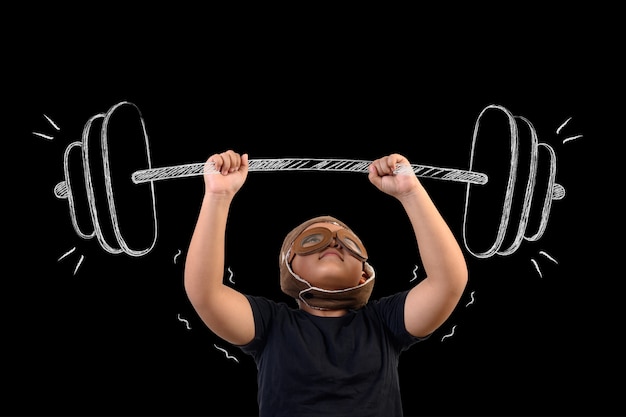
Weightlifting, also called resistance training, is beneficial for everyone, no matter the age. It helps build strength, improves balance, enhances mobility and coordination, and is one of the most effective ways to keep your body healthy and strong over time.
For kids and teens, it can aid in developing coordination and improving mental health and self-confidence. Women can benefit from it by reducing the risk of osteoporosis and fractures, while older adults may find it especially helpful for improving balance and coordination.
Though strength training is straightforward and doesn’t require much time or equipment, doing it incorrectly can lead to injuries and slow your progress. Whether you’re a seasoned gym-goer or just starting out, here are five common weightlifting mistakes and how to fix them.
### Mistake #1: Using Poor Form
When you’re trying a new exercise, you’re essentially teaching your body how to move in a way it hasn’t before. Good form is crucial for avoiding injuries and making progress. Think of it like learning to walk before you start running; you need to get the basics right before adding weight to your moves.
**Fix:** Schedule at least one session with a certified personal trainer who specializes in the kind of exercise plan you’re interested in. A good trainer can teach you proper form and help you feel confident enough to safely progress. If you’re unsure about which exercises are best for your goals, start by consulting a doctor, sports medicine specialist, physical therapist, or athletic trainer for guidance.
### Mistake #2: Lifting Too Much Weight
When it comes to building strength, more isn’t always better. Lifting too much weight, especially during complex moves, can lead to serious injuries like muscle tears, back issues, or even fainting from straining too hard. Overloading can do more harm than good, particularly if you already have health concerns.
**Fix:** If you’re not sure about the right amount of weight, go lighter and focus on doing more reps and sets. Using lighter weights lets you build endurance and motor control while being just as beneficial as heavier lifts.
### Mistake #3: Skipping Rest Days
Just like your brain needs rest to recharge, your muscles need downtime to grow and recover. A common mistake is relying on muscle soreness to decide when to rest, but soreness doesn’t always mean you’ve done an effective workout. In fact, most muscle recovery happens within the first 12 to 24 hours after exercising.
**Fix:** While resistance training can be done daily, be mindful of switching up your exercises rather than repeating the same ones every day. Alternate between upper and lower body exercises, push and pull movements, or large and small muscle groups to balance your routine based on your fitness goals.
### Mistake #4: Believing “No Pain, No Gain”
It’s normal to feel some discomfort after trying a new workout, especially within the first day or two. But there’s a key difference between discomfort and pain. Experiencing pain while exercising is often a sign that something is wrong.
**Fix:** If you feel pain during a workout, stop immediately. Pushing through pain may worsen it or cause lasting injuries. If the pain persists, it’s a good idea to check in with your doctor to make sure everything is okay.
### Mistake #5: Neglecting Core Training
Your core muscles aren’t just your abs—this group includes many muscles between your knees and chest, including those in your back. A strong core is critical for stabilizing movements, whether it’s lifting weights or simply standing up from a chair. Skipping core exercises can increase your risk of back injuries, knee pain, and other issues.
**Fix:** To strengthen your core, incorporate stabilization exercises into your routine. This can include things like mobility training, yoga, or weighted movements that engage your midsection.
### Final Thoughts
Avoiding these common weightlifting mistakes can make a big difference in your progress and help you stay injury-free. If you’re uncertain about which exercises are best for you or how to perform them correctly, don’t hesitate to seek advice from a professional. Exercise is great for both your mental and physical health, but getting proper guidance is key to making the most of it.